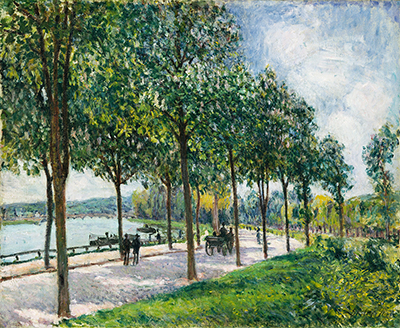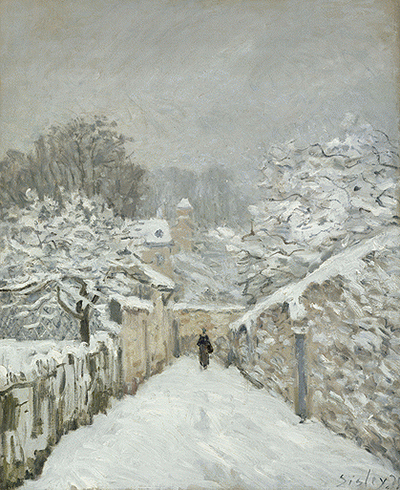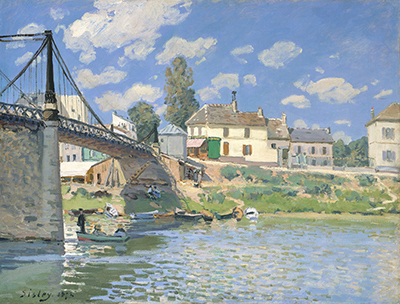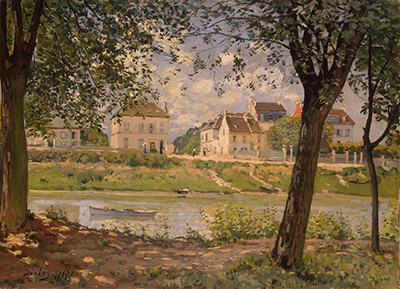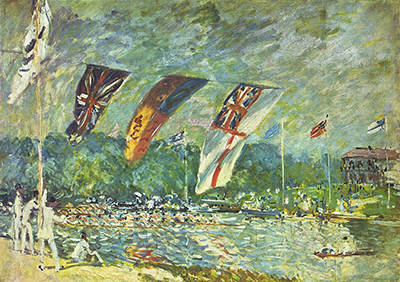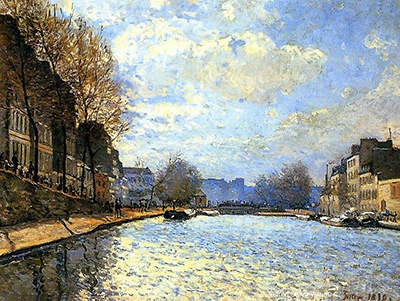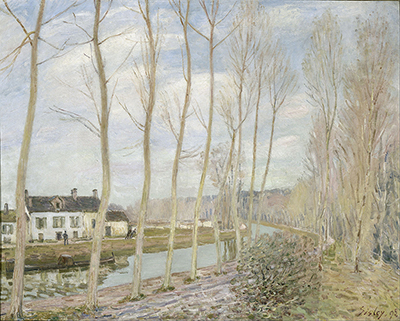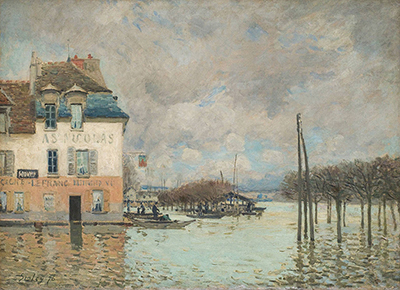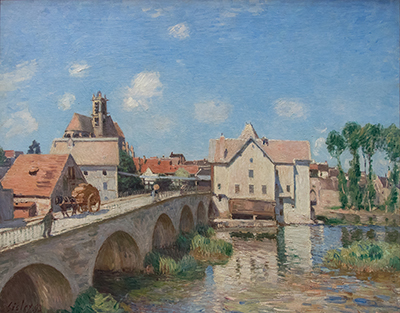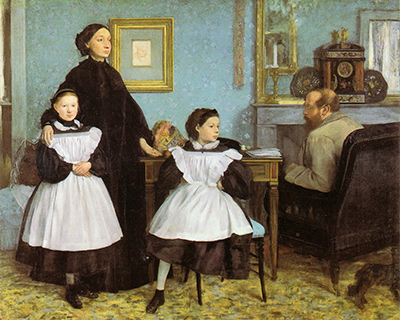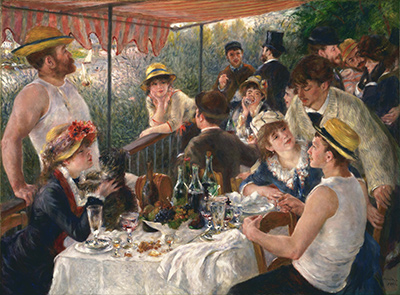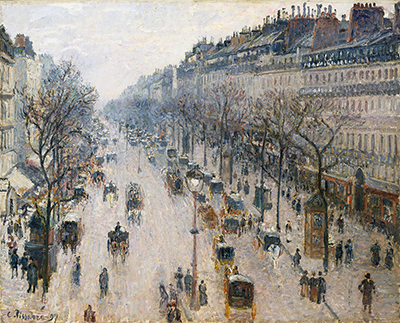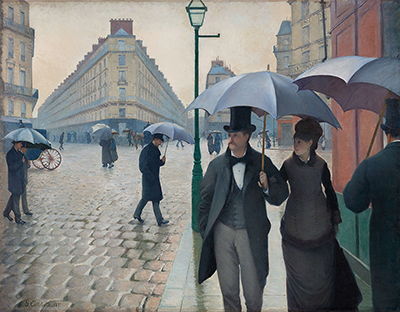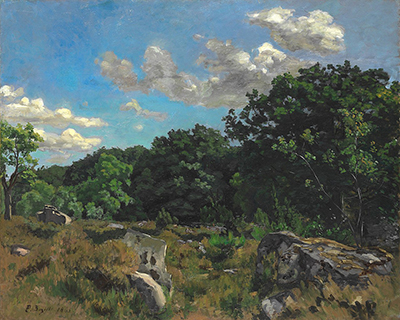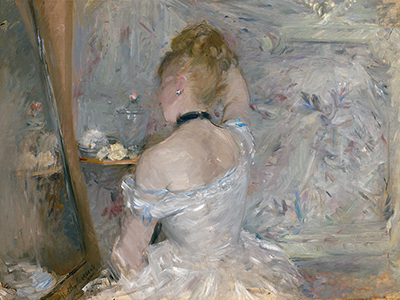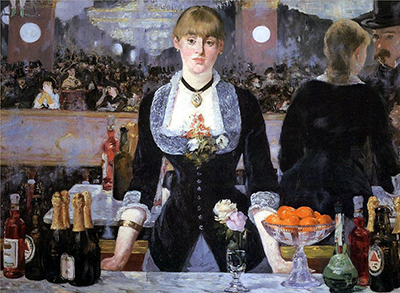Allée of Chestnut Trees is an oil on canvas painting that was produced by Alfred Sisley in 1878. The painting is currently at the New York-based art museum known as the Met or Metropolitan Museum of Art.
Alfred painted Allée of Chestnut Tree while living in Sèvres with his family. Sèvres is a commune located in the southwestern suburbs of Paris. The painting is a picture of a curved pathway that's lined with chestnuts in full bloom. This pathway follows a bend in river Seine, which lends viewers access across the scenic space. The weather in the painting is pleasant, with the grass bending gently in the wind. The painting depicts an ordinary afternoon that many people enjoy. Parisian vacationers are seen enjoying a great fay along river Seine.
Alfred's style mainly focused on landscapes, and only a few characters in his paintings appeared as decoration. Like the English landscape painter John Constable, Alfred liked painting places that he knew well. As such, he liked the Thames valley and Seine areas. In this painting, Alfred used a style called Impressionism. This style is defined by short, independent brushstrokes forming into general noticeable shapes. Impressionist art uses bright colours that dazzle on their own. The style also changes the normal use of light, using light spots for shadows or different shades of colours, instead of black and white. Impressionism looked to depict life as it was during that period. All the elements that characterise impressionism are present in Allée of Chestnut Trees. The use of short brushstrokes creating bright colours, shapes and colours as shadows can be seen in this painting.
Although Alfred devoted himself to landscape painting throughout his career, his early works were largely influenced by the realism of Daubigny, Corot and Courbet. In the 1860s, Alfred met Pissarro, Renoir, Monet and Bazille, with whom the painter brought forth the technique of producing paintings directly from nature. He exhibited with the Impressionists and enjoyed a short-lived, but significant, success during the 1870s. Alfred - unlike other Impressionist painters who later went back to their studios - remained outdoors and painted from his sketches executed in the countryside. Alfred is ranked among the greatest Impressionist painters who ever lived and one of the greatest landscape painters in the history of art. The painter's works can be seen in some of the world's best art museums.
More Impressionist Artists



